
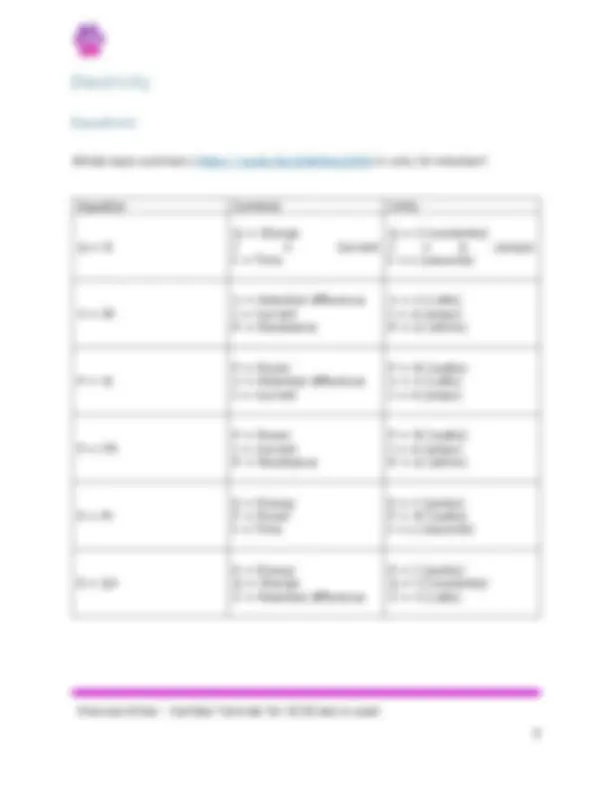
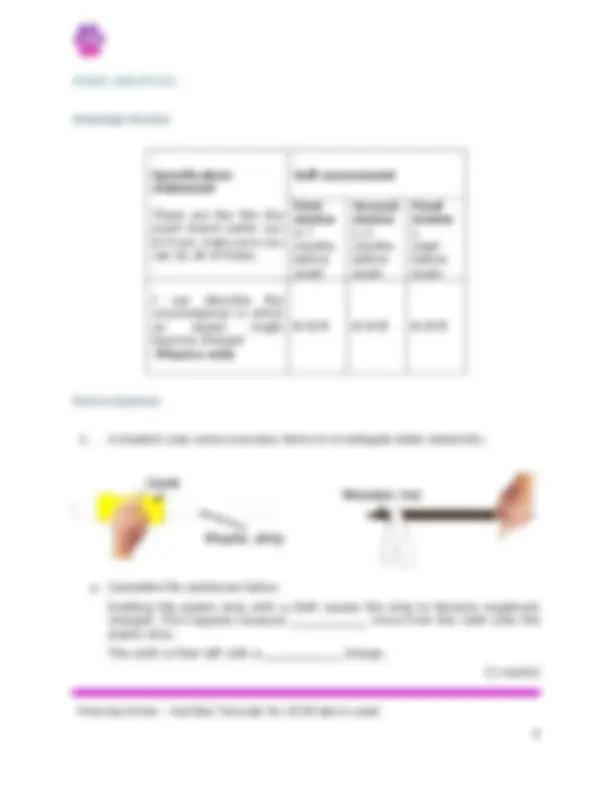
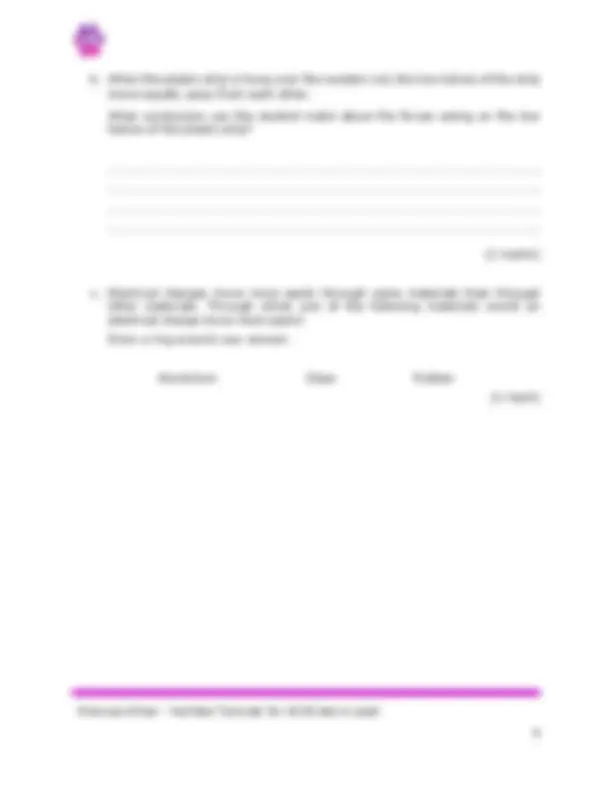
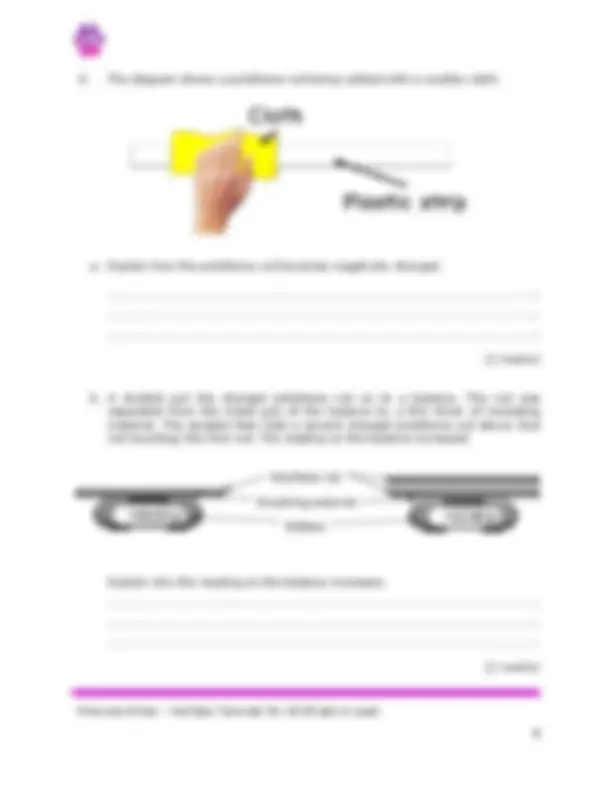
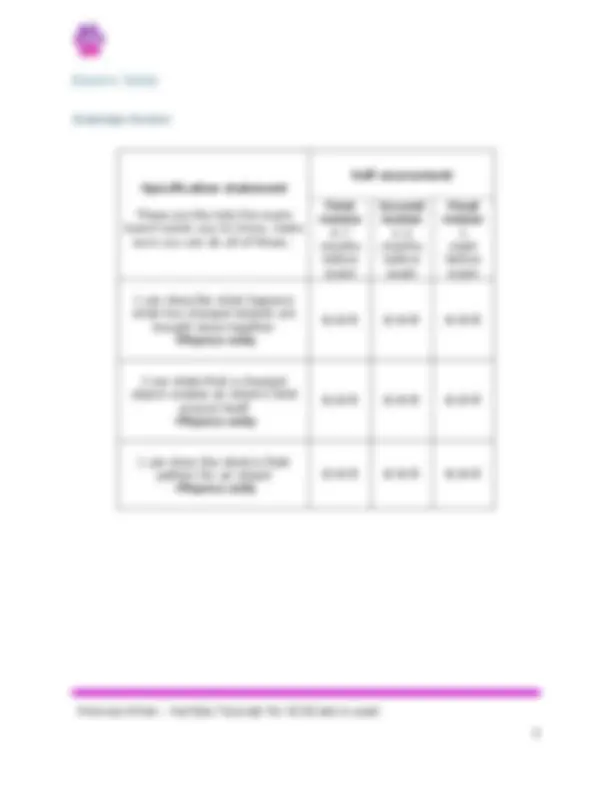
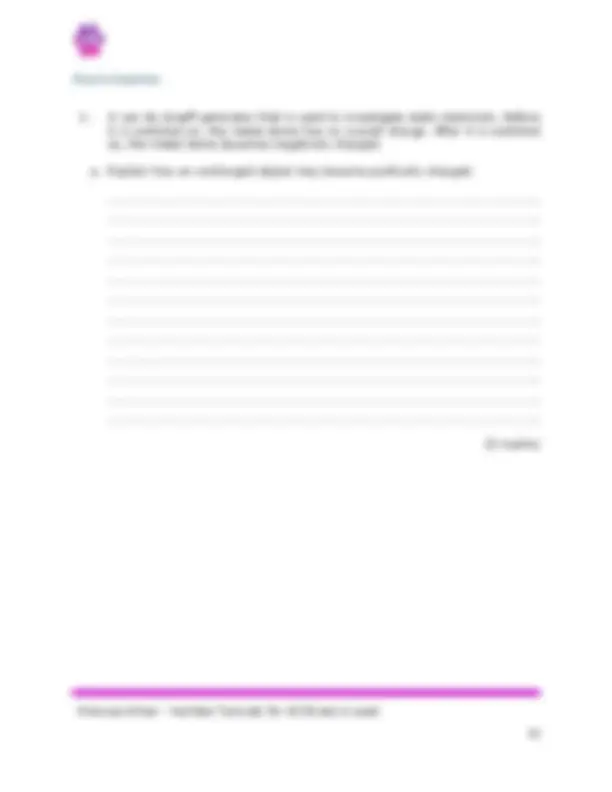
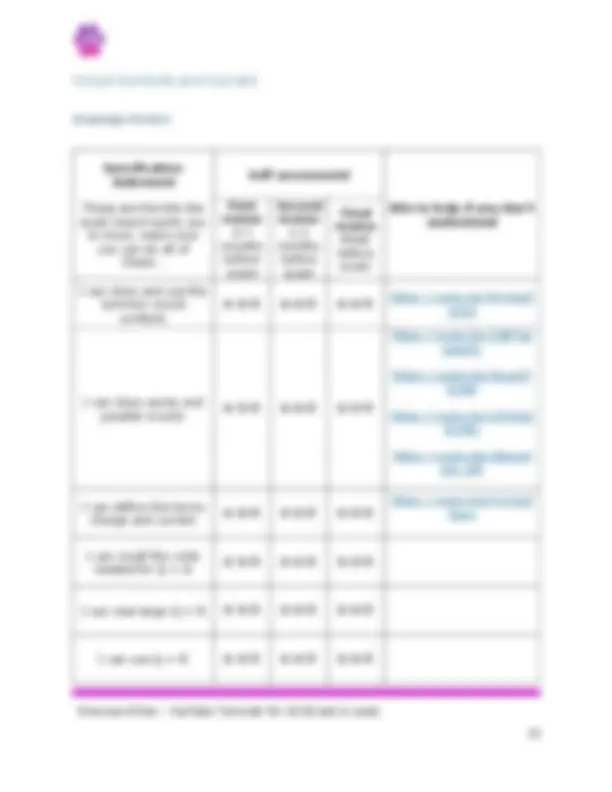
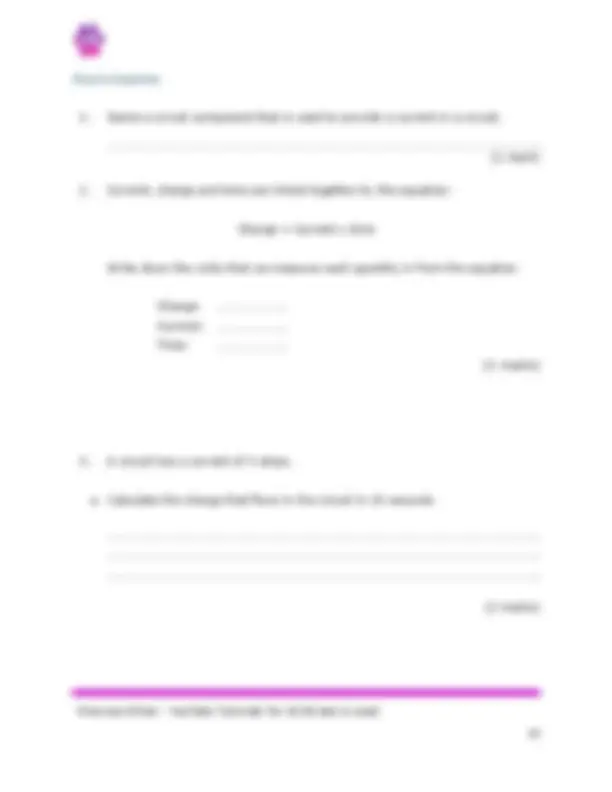
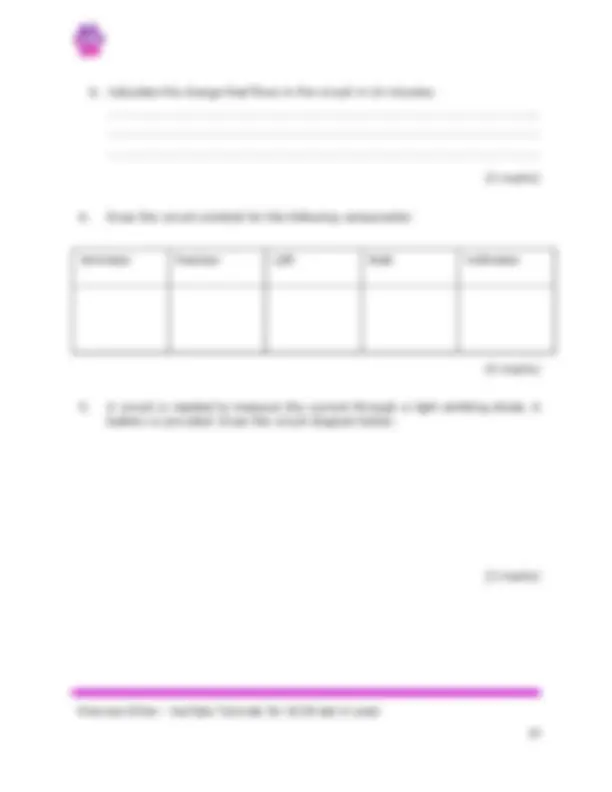
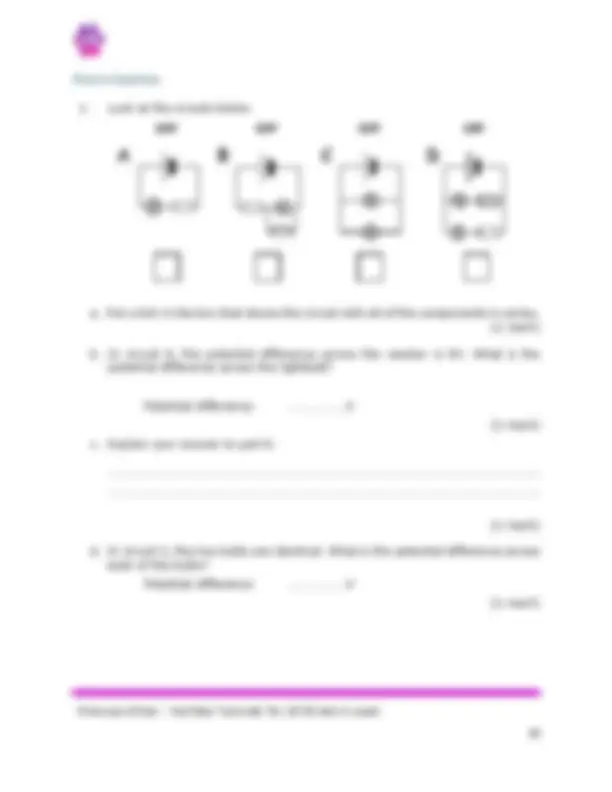
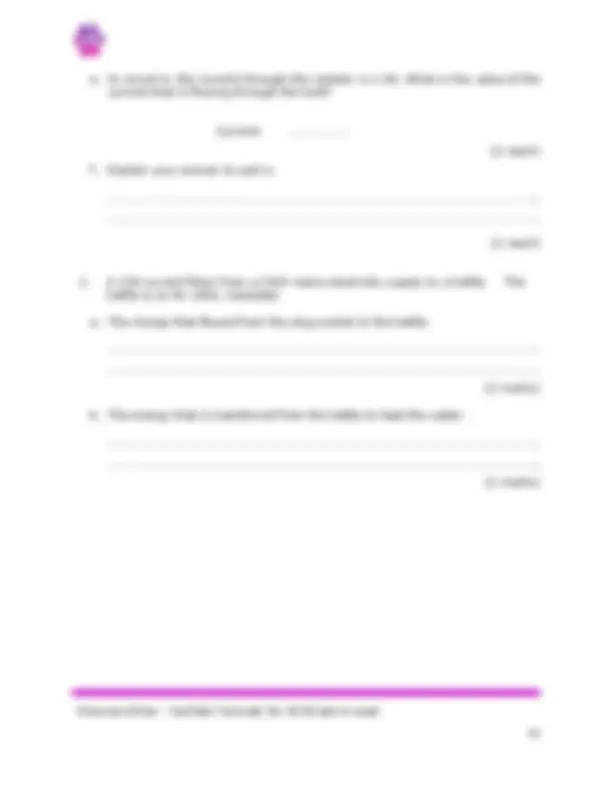
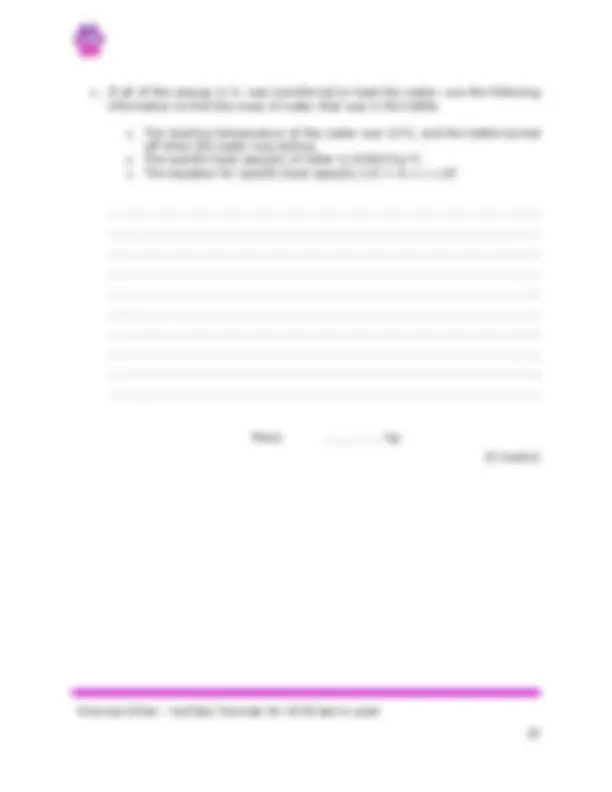
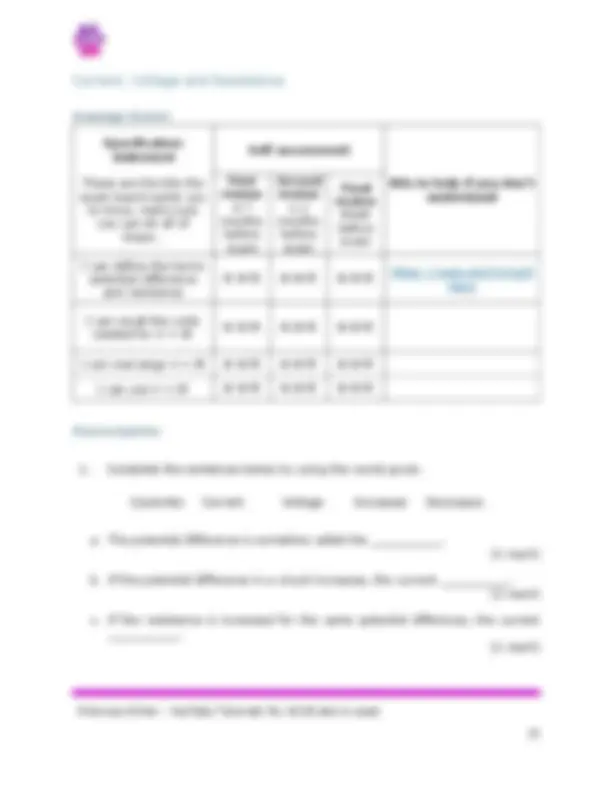
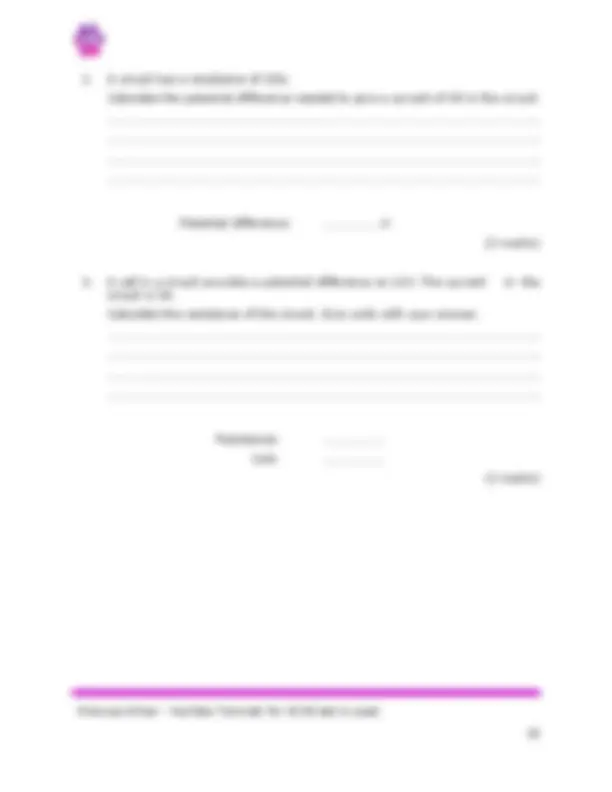
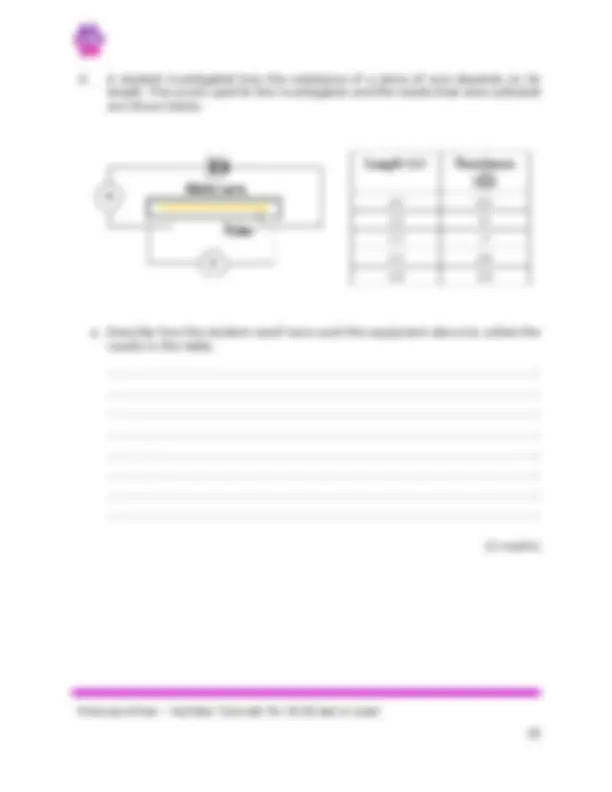
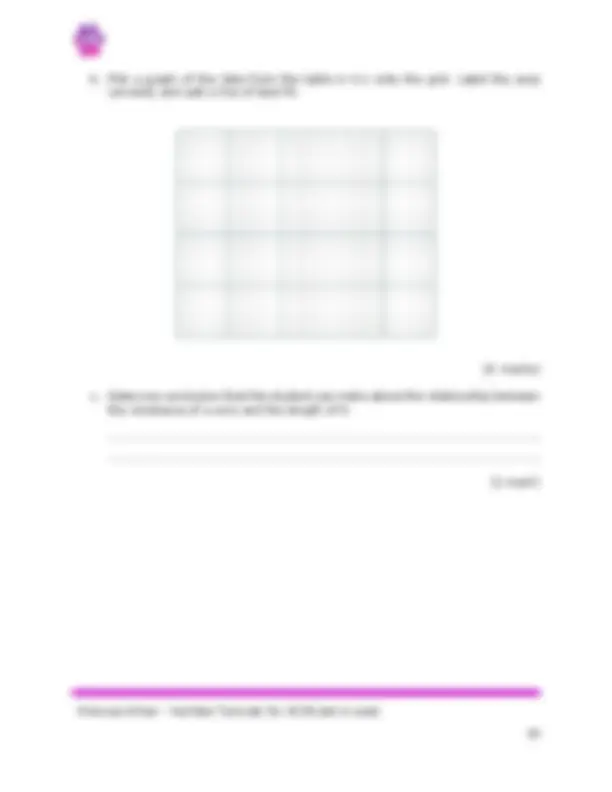
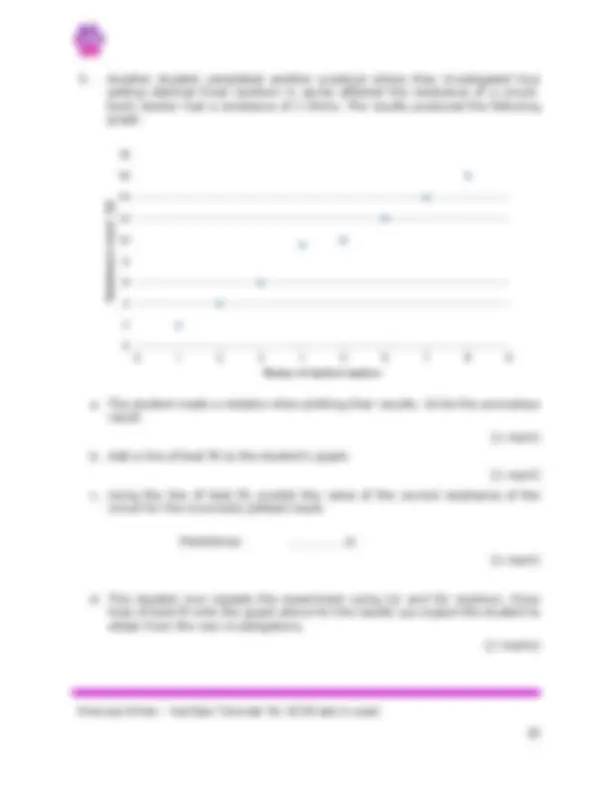
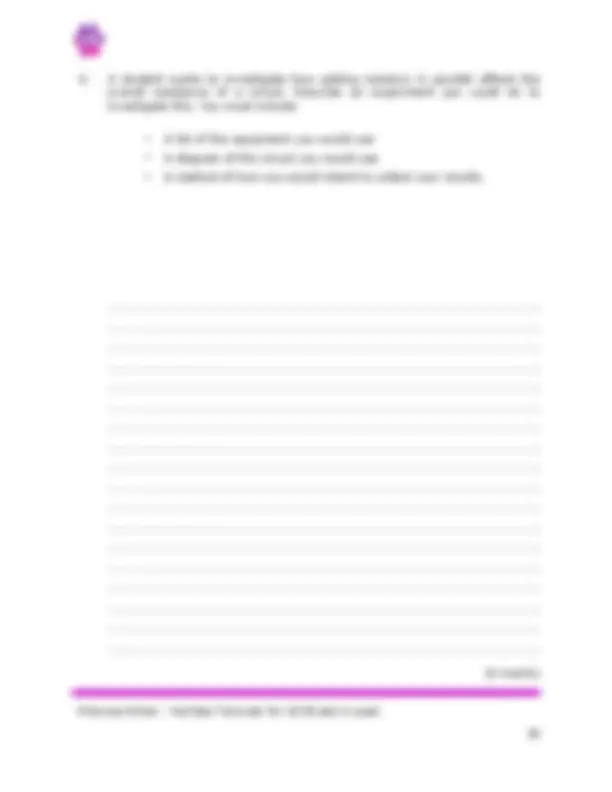
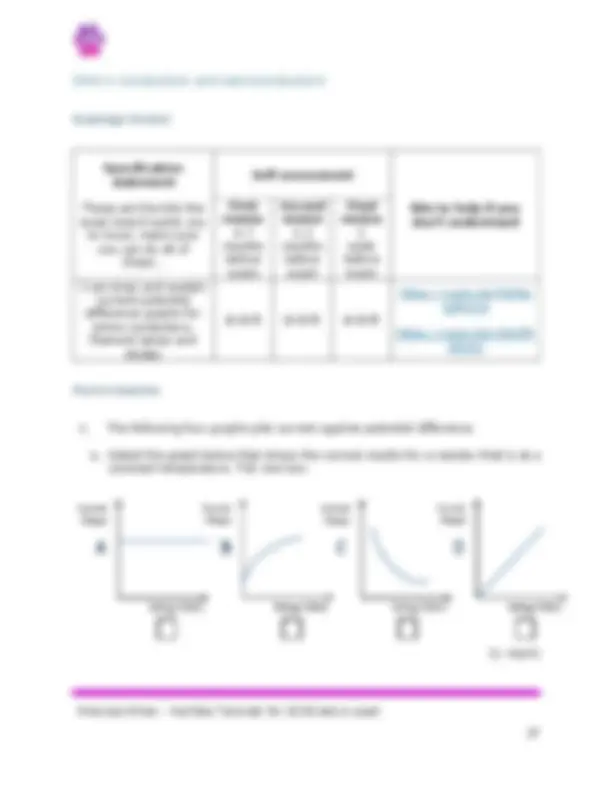
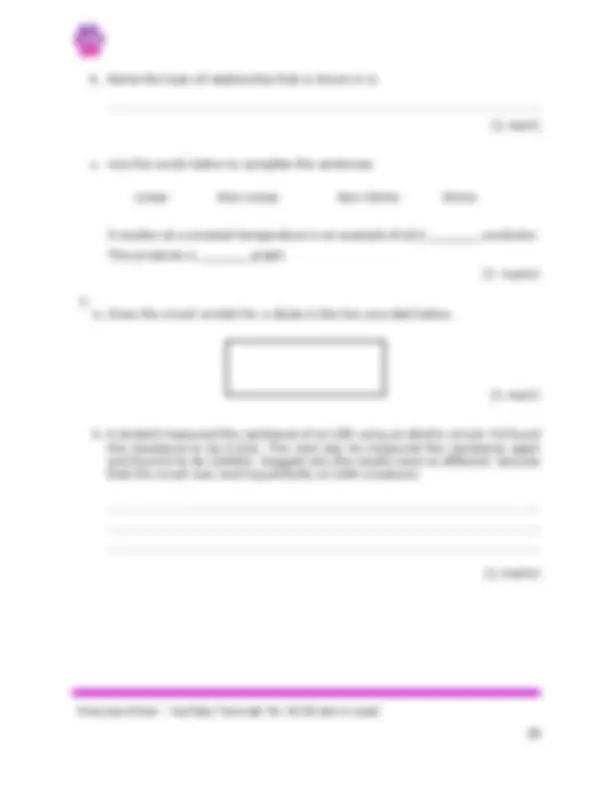
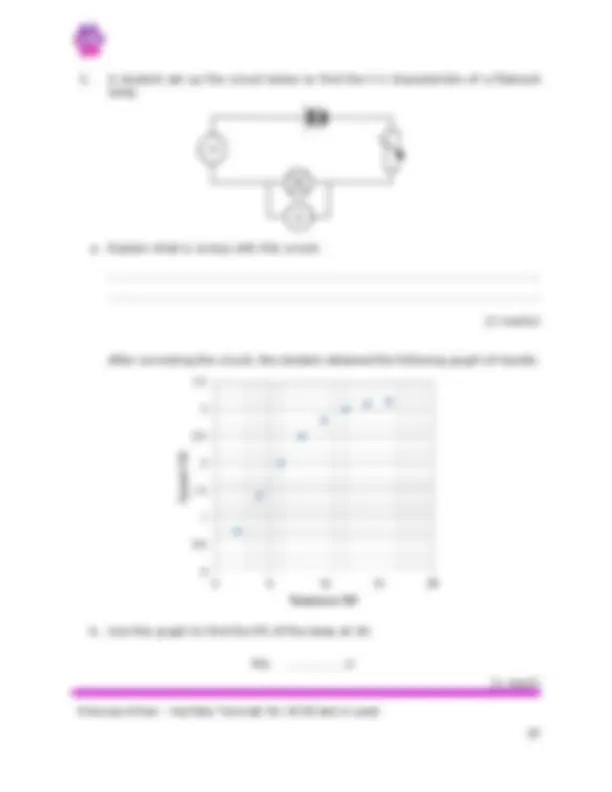
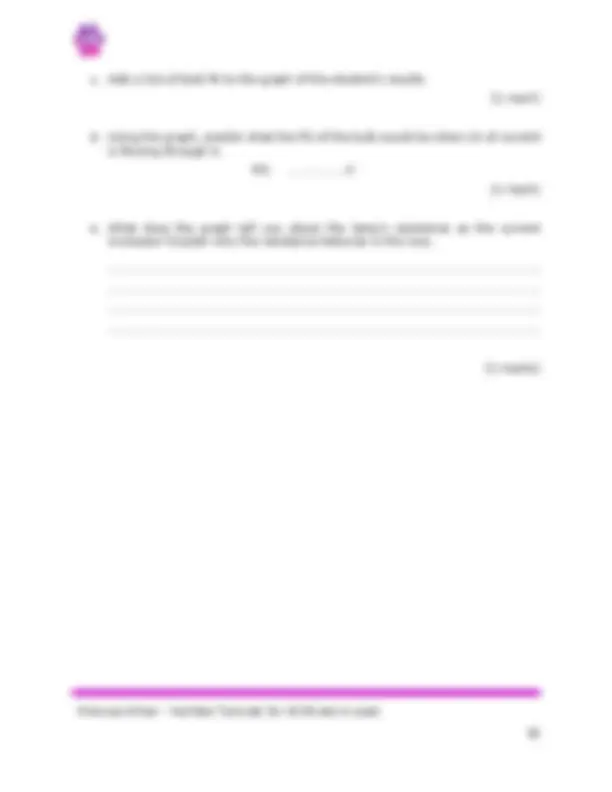
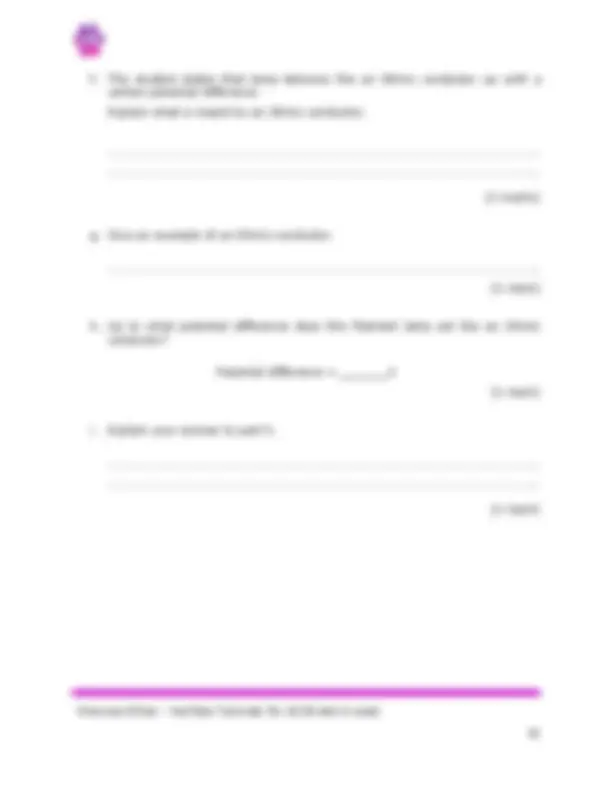
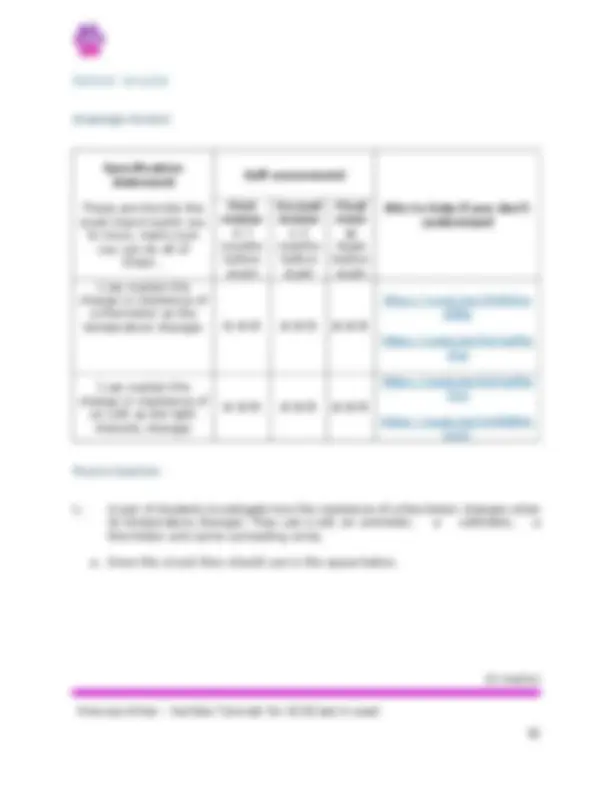
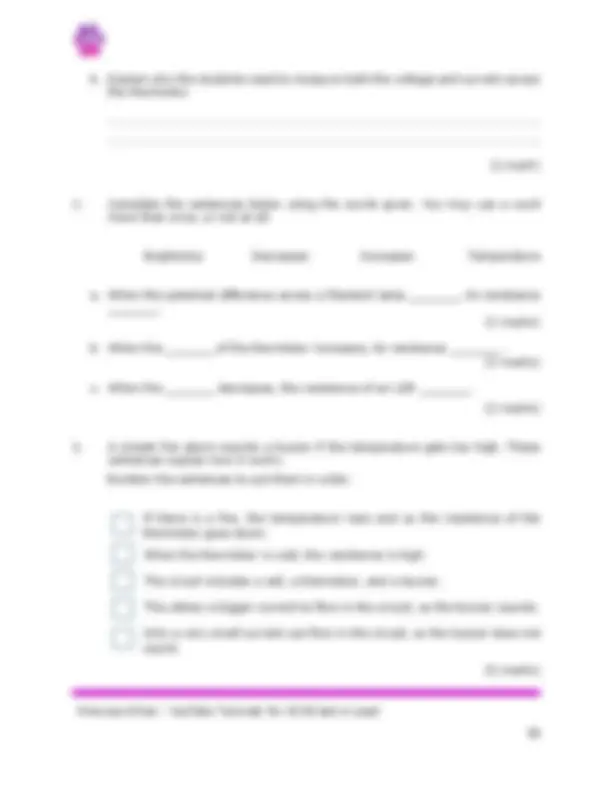
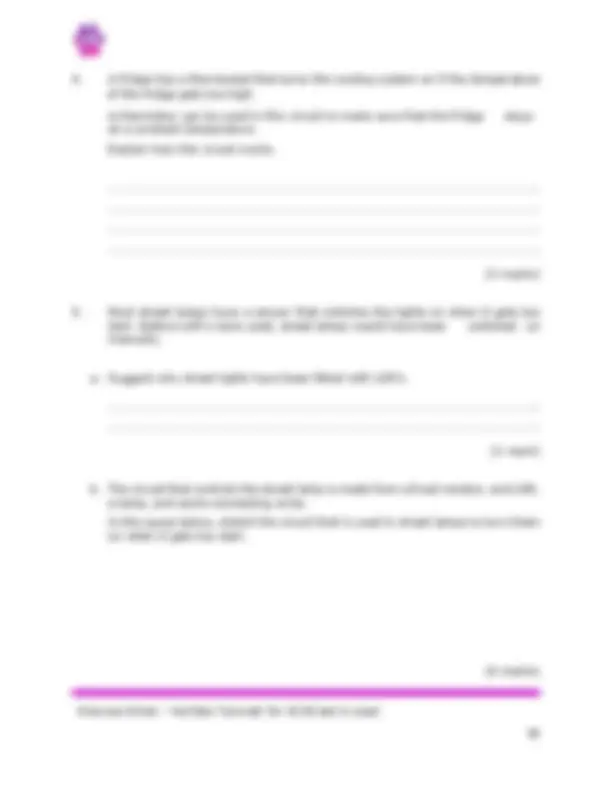
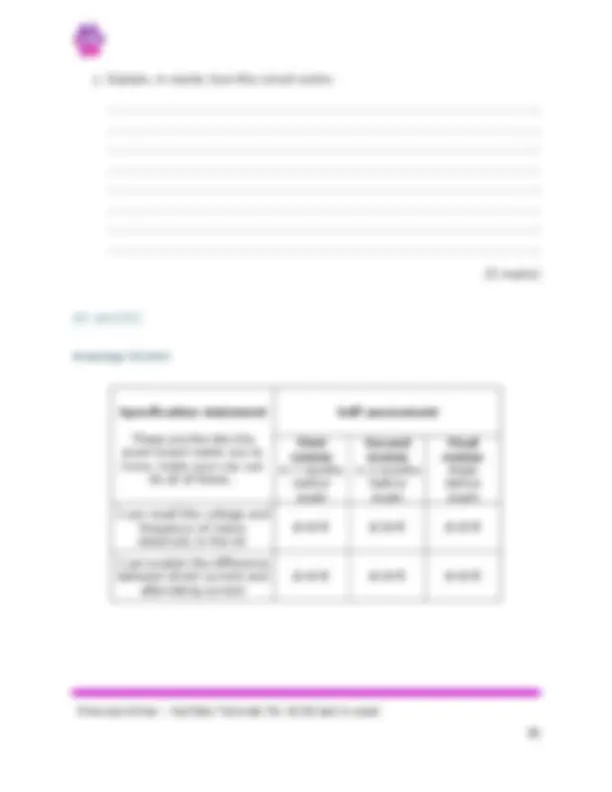
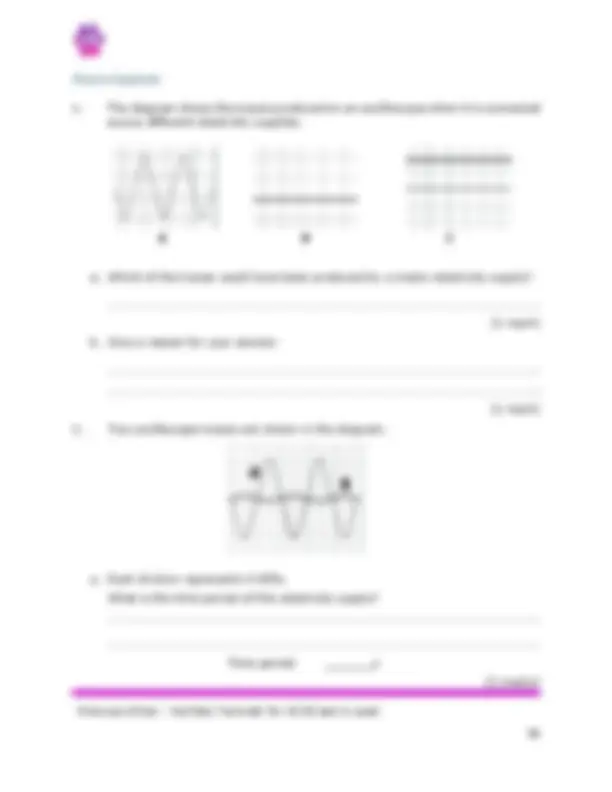
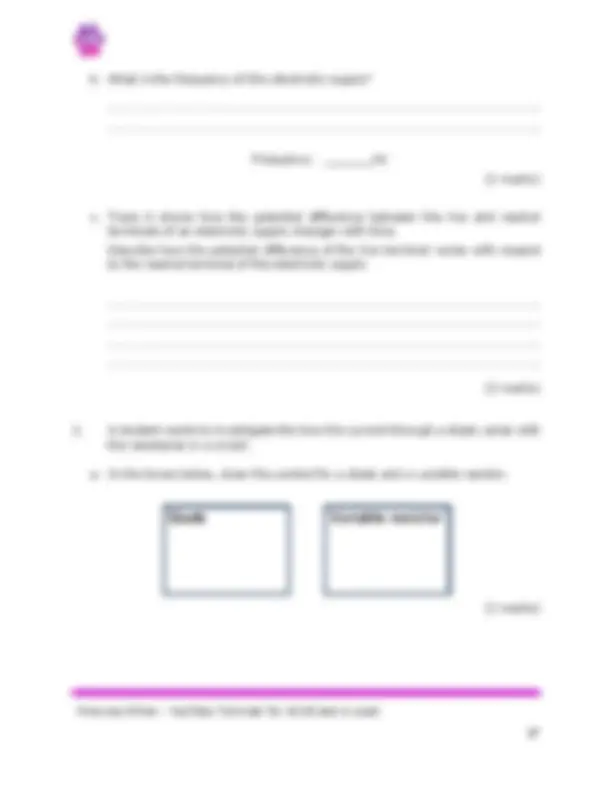
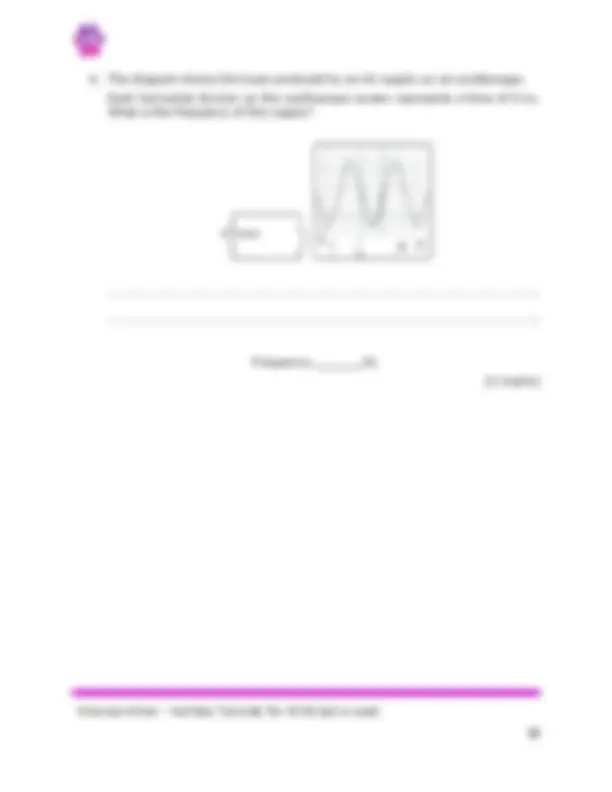
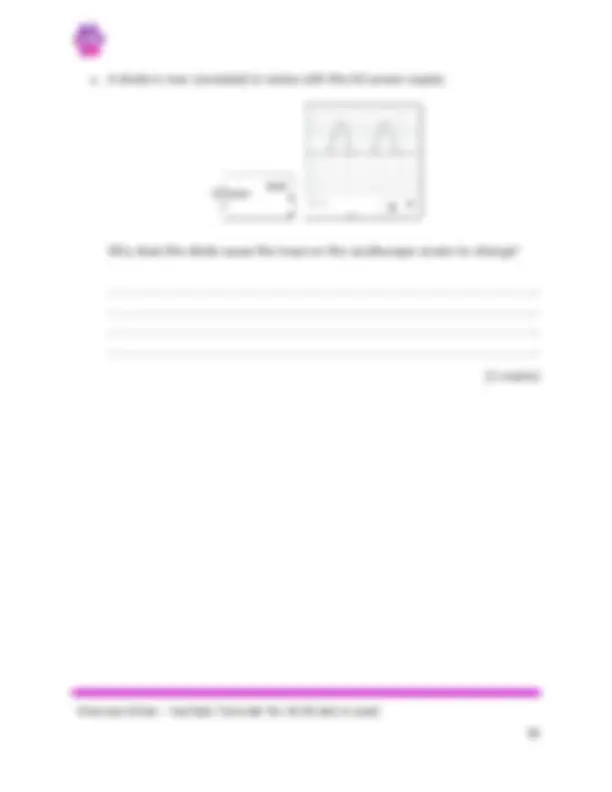
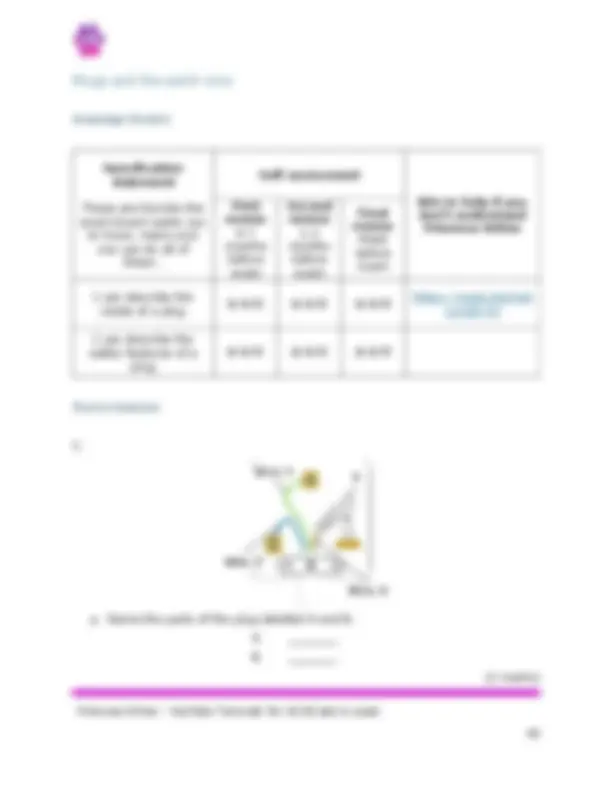
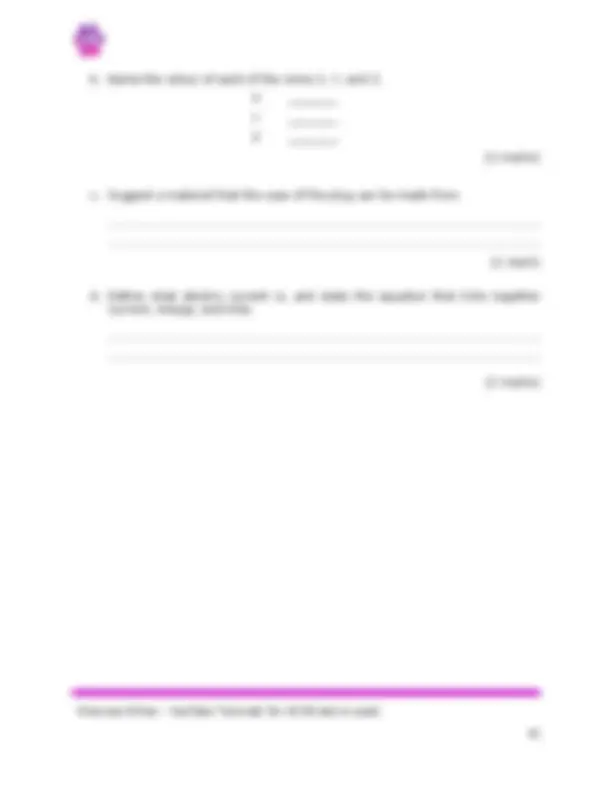
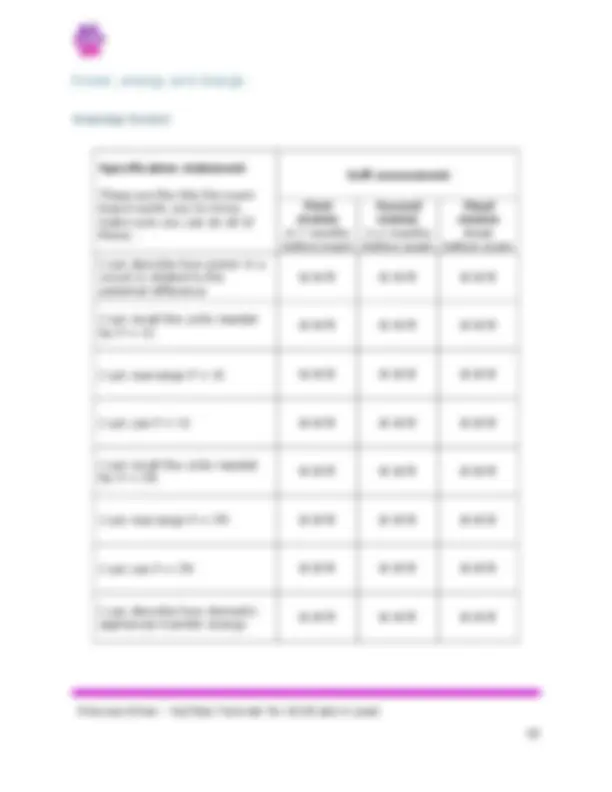
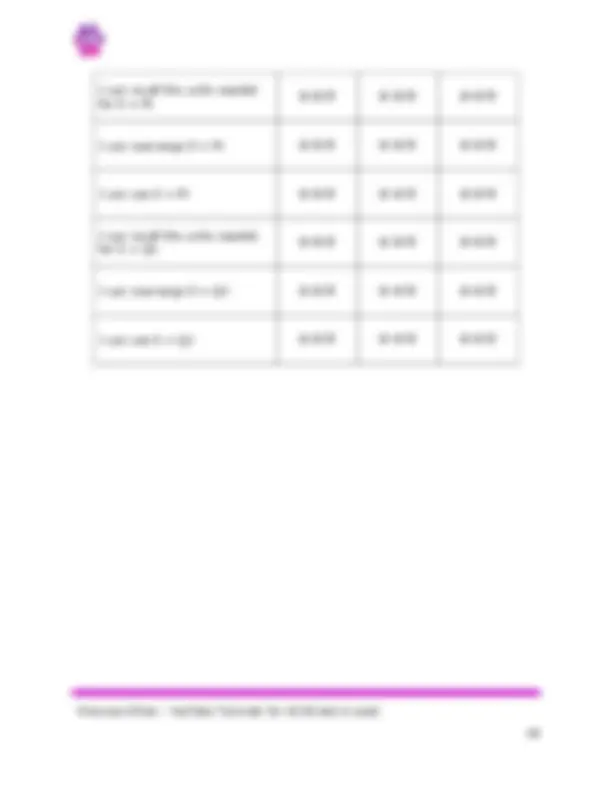
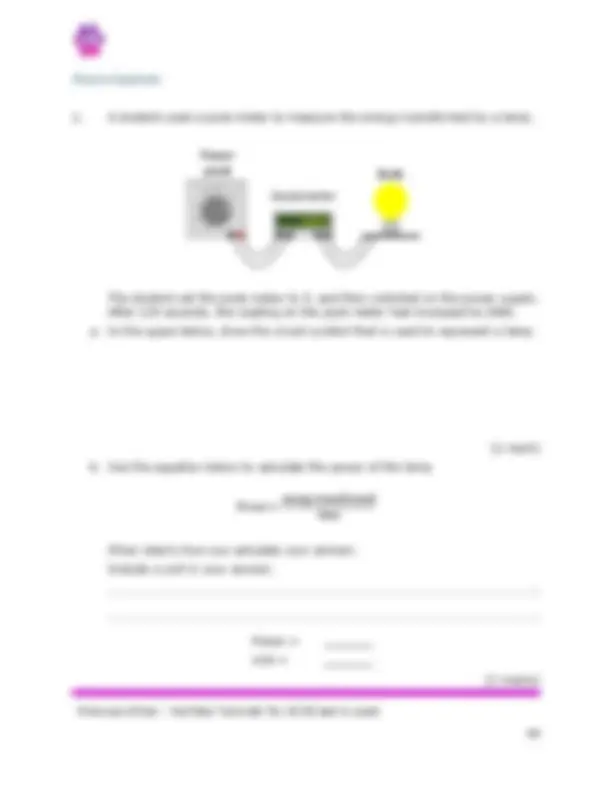
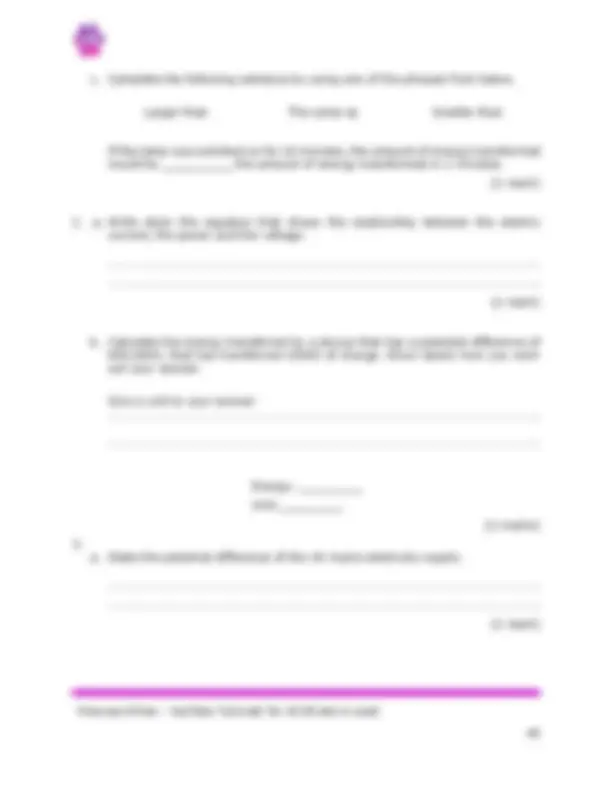
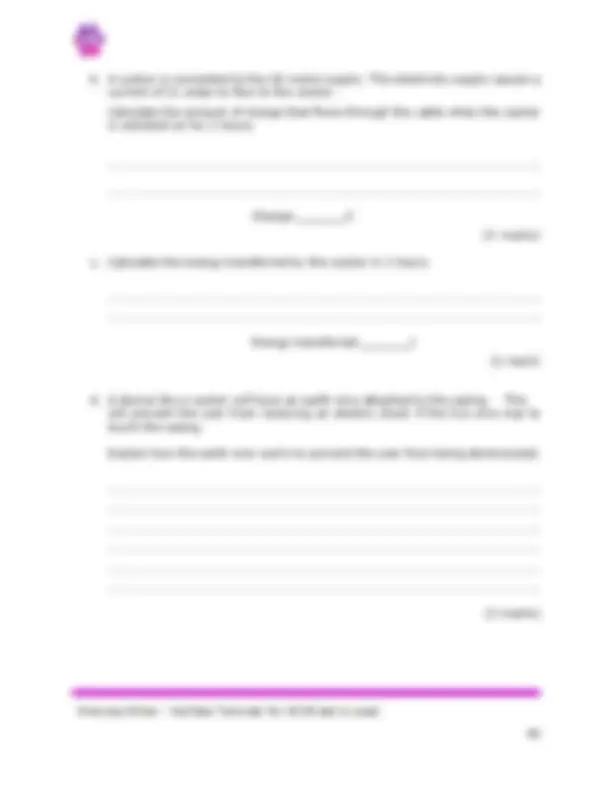
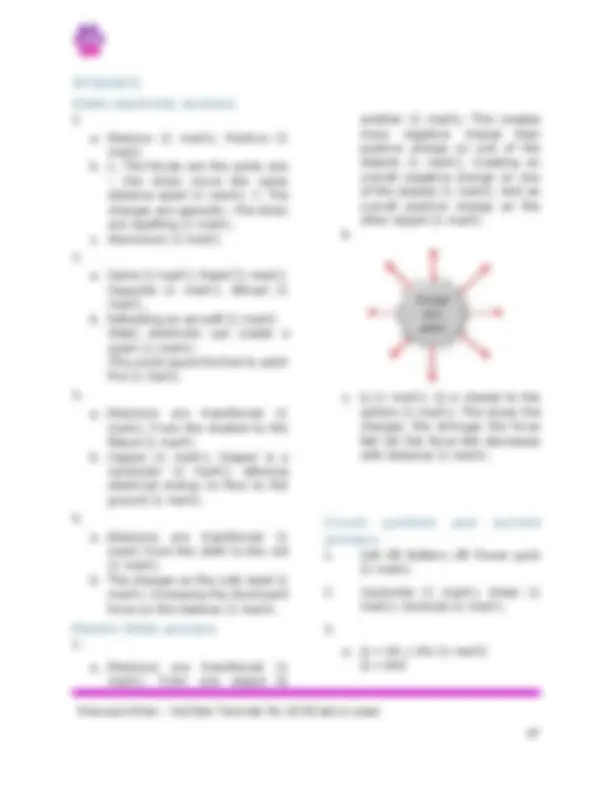
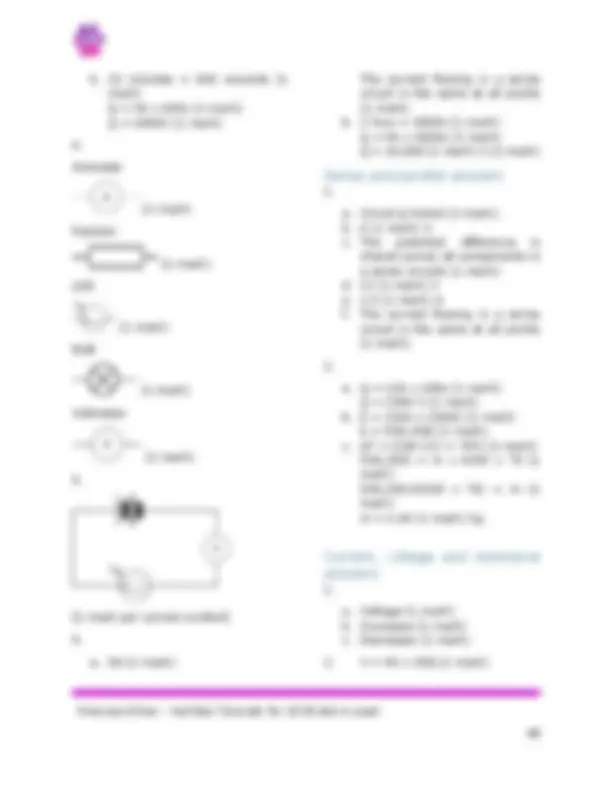
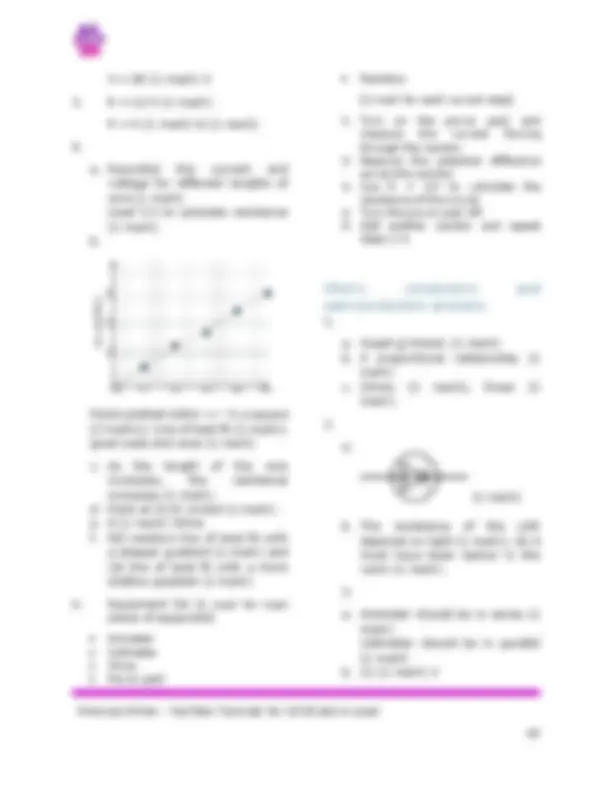
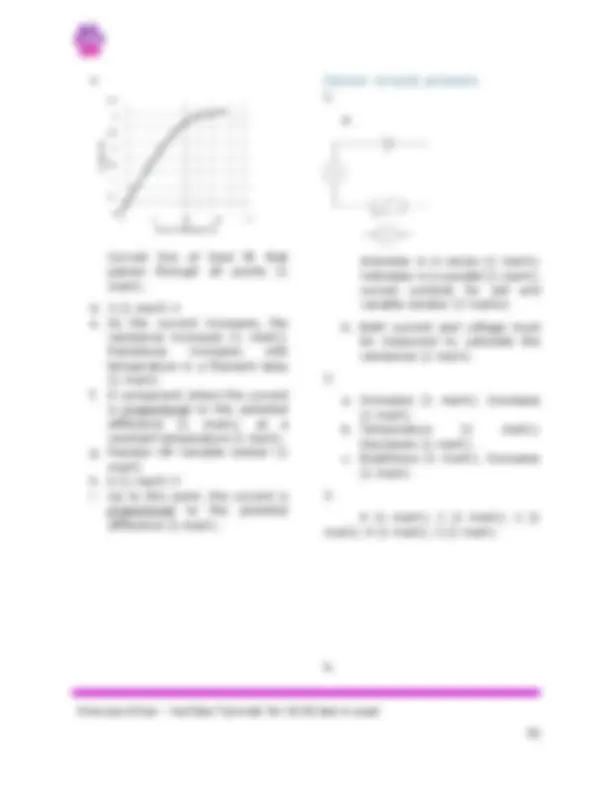
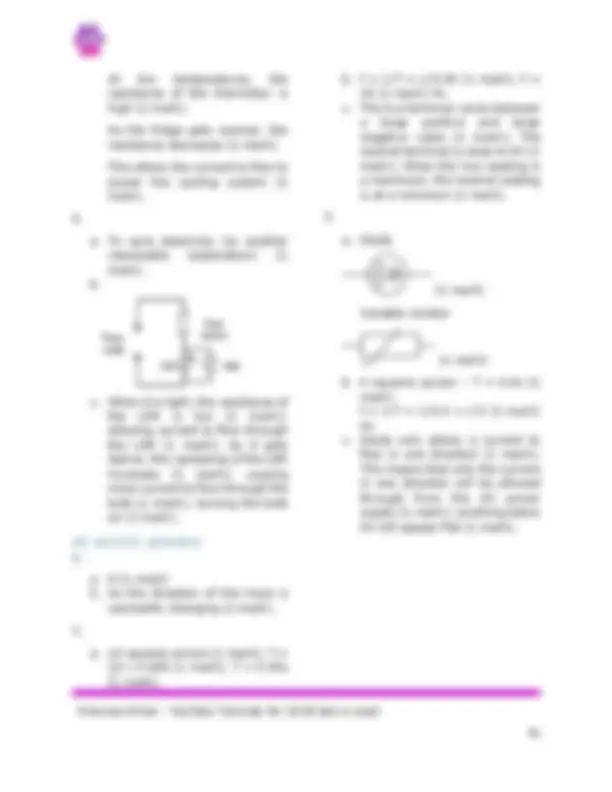
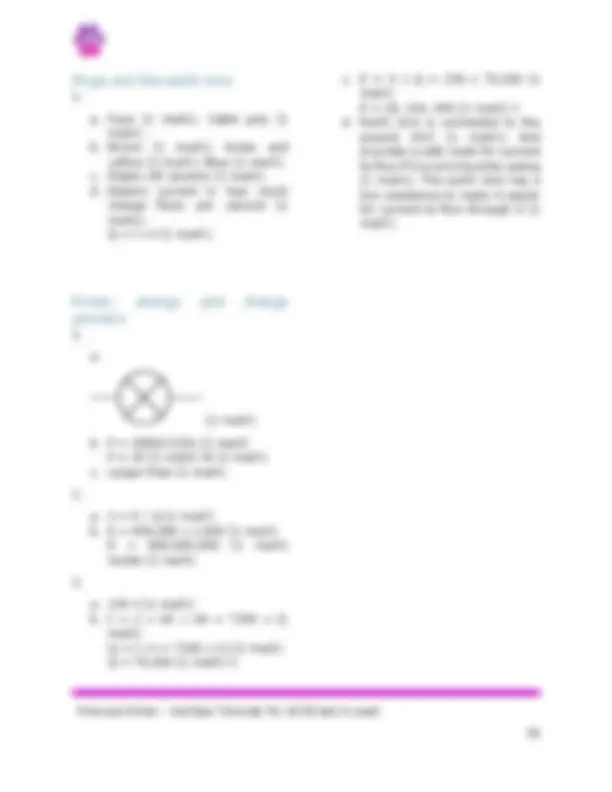


Study with the several resources on Docsity

Earn points by helping other students or get them with a premium plan


Prepare for your exams
Study with the several resources on Docsity

Earn points to download
Earn points by helping other students or get them with a premium plan
Community
Ask the community for help and clear up your study doubts
Discover the best universities in your country according to Docsity users
Free resources
Download our free guides on studying techniques, anxiety management strategies, and thesis advice from Docsity tutors
Practice questions related to electrical charges and circuits for GCSE and A-Level students. The questions cover topics such as potential difference, resistance, and the relationship between them. Students are required to justify their answers and explain their choices.
Typology: Lecture notes
1 / 52

This page cannot be seen from the preview
Don't miss anything!













































Primrose Kitten – YouTube Tutorials for GCSE and A-Level.
Primrose Kitten – YouTube Tutorials for GCSE and A-Level.
Specification statement These are the bits the exam board wants you to know, make sure you can do all of these… Self-assessment First review 4 - 7 months before exam Second review 1 - 2 months before exam Final review 1 week before exam I can describe the circumstances in which an object might become charged
- Physics only
Primrose Kitten – YouTube Tutorials for GCSE and A-Level. b. When the plastic strip is hung over the wooden rod, the two halves of the strip move equally away from each other. What conclusions can the student make about the forces acting on the two halves of the plastic strip? …………………………………………………………………………………………………………………………….. …………………………………………………………………………………………………………………………….. …………………………………………………………………………………………………………………………….. …………………………………………………………………………………………………………………………….. (2 marks) c. Electrical charges move more easily through some materials than through other materials. Through which one of the following materials would an electrical charge move most easily? Draw a ring around your answer. Aluminium Glass Rubber ( 1 mark)
Primrose Kitten – YouTube Tutorials for GCSE and A-Level.
Primrose Kitten – YouTube Tutorials for GCSE and A-Level.
Primrose Kitten – YouTube Tutorials for GCSE and A-Level.
Primrose Kitten – YouTube Tutorials for GCSE and A-Level. b. The image below shows a plan view of the positively charged metal dome of a van de Graaff generator. Draw the electric field pattern around the metal dome when it is not interacting with anything from its surroundings. (2 marks)
Primrose Kitten – YouTube Tutorials for GCSE and A-Level.
Specification statement These are the bits the exam board wants you to know, make sure you can do all of these… Self-assessment Bits to help if you don’t understand First review 4 - 7 months before exam Second review 1 - 2 months before exam Final review Week before exam I can draw and use the common circuit symbols
https://youtu.be/HiVcnpD QOcI I can draw series and parallel circuits
https://youtu.be/2QBTaq 63mYk https://youtu.be/rbLqufY EVN https://youtu.be/xZXKaQ W2jBc https://youtu.be/oBuewt 6m_KM I can define the terms charge and current
https://youtu.be/k3vCg3l Gpys I can recall the units needed for Q = It
I can rearrange Q = It ☺^ ^ ^ ☺^ ^ ^ ☺^ ^ I can use Q = It ☺ ☺ ☺
Primrose Kitten – YouTube Tutorials for GCSE and A-Level.
Primrose Kitten – YouTube Tutorials for GCSE and A-Level.
Primrose Kitten – YouTube Tutorials for GCSE and A-Level.
Specification statement These are the bits the exam board wants you to know, make sure you can do all of these… Self-assessment Bits to help if you don’t understand First review 4 - 7 months before exam Second review 1 - 2 months before exam Final review 1 week before exam I can describe the way current behaves in a series circuit
https://youtu.be/g2kUj3x fM https://youtu.be/E70eNm 2lITI https://youtu.be/OdmmK xa0Nhs https://youtu.be/g2kUj3x fM I can describe the way potential difference behaves in a series circuit
I can describe the way resistance behaves in a series circuit
I can describe the way current behaves in a parallel circuit
I can describe the way potential difference behaves in a parallel circuit
I can describe the way resistance behaves in a parallel circuit
Primrose Kitten – YouTube Tutorials for GCSE and A-Level. e. In circuit A, the current through the resistor is 1.5A. What is the value of the current that is flowing through the bulb? Current: ………………. (1 mark) f. Explain your answer to part e. …………………………………………………………………………………………………………………………….. …………………………………………………………………………………………………………………………….. (1 mark)
Primrose Kitten – YouTube Tutorials for GCSE and A-Level. c. If all of the energy in b. was transferred to heat the water; use the following information to find the mass of water that was in the kettle. o The starting temperature of the water was 22oC, and the kettle turned off when the water was boiling. o The specific heat capacity of water is 4200J/kg.oC o The equation for specific heat capacity is E = m x c x ΔT …………………………………………………………………………………………………………………………….. …………………………………………………………………………………………………………………………….. …………………………………………………………………………………………………………………………….. …………………………………………………………………………………………………………………………….. …………………………………………………………………………………………………………………………….. …………………………………………………………………………………………………………………………….. …………………………………………………………………………………………………………………………….. …………………………………………………………………………………………………………………………….. …………………………………………………………………………………………………………………………….. …………………………………………………………………………………………………………………………….. Mass: ………………. kg (5 marks)